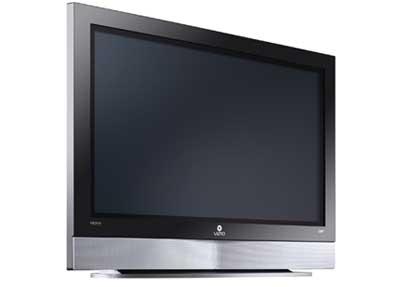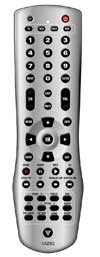Vizio P42HDTV 42-inch Plasma HDTV

| What We Think |
| A tasty-looking set that offers surprisingly good performance at an astonishing price. |
Compared with its plain-looking predecessor, the P42HDe, Vizio's new 42-incher has strong couch appeal. With a screen surrounded by a glossy black frame and silver bottom-mounted speakers, it doesn't look at all like a budget plasma TV. If you misplace the remote, controls are located out of sight on the TV's side. The sturdy plastic base can be easily removed for wall mounting, and Vizio offers various hardware options on its Web site, starting at $149 - plus a full installation service at $499 (available nationwide).
Input options on the Vizio P42HDTV are a bit sparse compared with those of pricier plasmas, but it has what you'll need to get up and running. Along with high-def HDMI and component-video jacks, you get a VGA input for hooking up a computer and a dedicated antenna input for grabbing off-the-air HDTV broadcasts from the built-in digital tuner. The latter input will accept an analog or digital cable TV feed, though the lack of a CableCARD slot on the TV means you won't be able to receive scrambled standard or high-def premium channels like HBO.
 The Vizio P42HDTV's remote control is fairly basic and doesn't have a backlit keypad - you can't have everything at this price. But the button layout is cleanly arranged, with controls for special features like picture-in-picture (PIP), picture-out-of-picture (POP), freeze, and zoom located out of the way at the bottom. A set of five direct-input buttons lets you instantly switch sources - a desirable feature on a remote control. And pressing the Wide button lets you toggle through the TV's display modes: Normal (4:3) and Wide (16:9) for HDTV and Normal, Wide, and Zoom for standard-def programs.
The Vizio P42HDTV's remote control is fairly basic and doesn't have a backlit keypad - you can't have everything at this price. But the button layout is cleanly arranged, with controls for special features like picture-in-picture (PIP), picture-out-of-picture (POP), freeze, and zoom located out of the way at the bottom. A set of five direct-input buttons lets you instantly switch sources - a desirable feature on a remote control. And pressing the Wide button lets you toggle through the TV's display modes: Normal (4:3) and Wide (16:9) for HDTV and Normal, Wide, and Zoom for standard-def programs.
SETUP For most users, the first step will be to unfold the quick-start poster that comes with the P42HDTV. This helpful chart guides you step-by-step through various tasks from connecting equipment to scanning the airwaves for broadcast TV channels. After I connected my sources and plugged in an indoor set-top antenna, I called up the DTV Tuner menu and let the auto-scan feature rip. Unfortunately, the Vizio has no onscreen tuning meter (a useful feature of many HDTVs that aids in antenna placement), but it still grabbed most of the digital broadcasts in my area. The one exception was the local NBC affiliate - a station that plenty of sets have had trouble pulling in. (With Olympic downhill skiing due to begin in 5 minutes, I was bummed.) When the scan was done, I pressed the remote's Guide button and called up a slick onscreen guide that offered detailed program information for each received channel along with program listings spanning several hours ahead.
Moving on to picture adjustments, I found that the Vizio P42HDTV offers three preset video modes plus a User setting that can be customized independently for each video input. Picture controls are minimal; standard settings like contrast, color, brightness, and sharpness are included, but you won't find advanced adjustments like color temperature, gamma, or noise reduction. Fortunately, the few controls you do get are good enough to get you rolling. The Vizio's 6,500-K color-temperature default setting turned out to be almost right on the nose; with only minor picture tweaks, the TV was good to go.














































